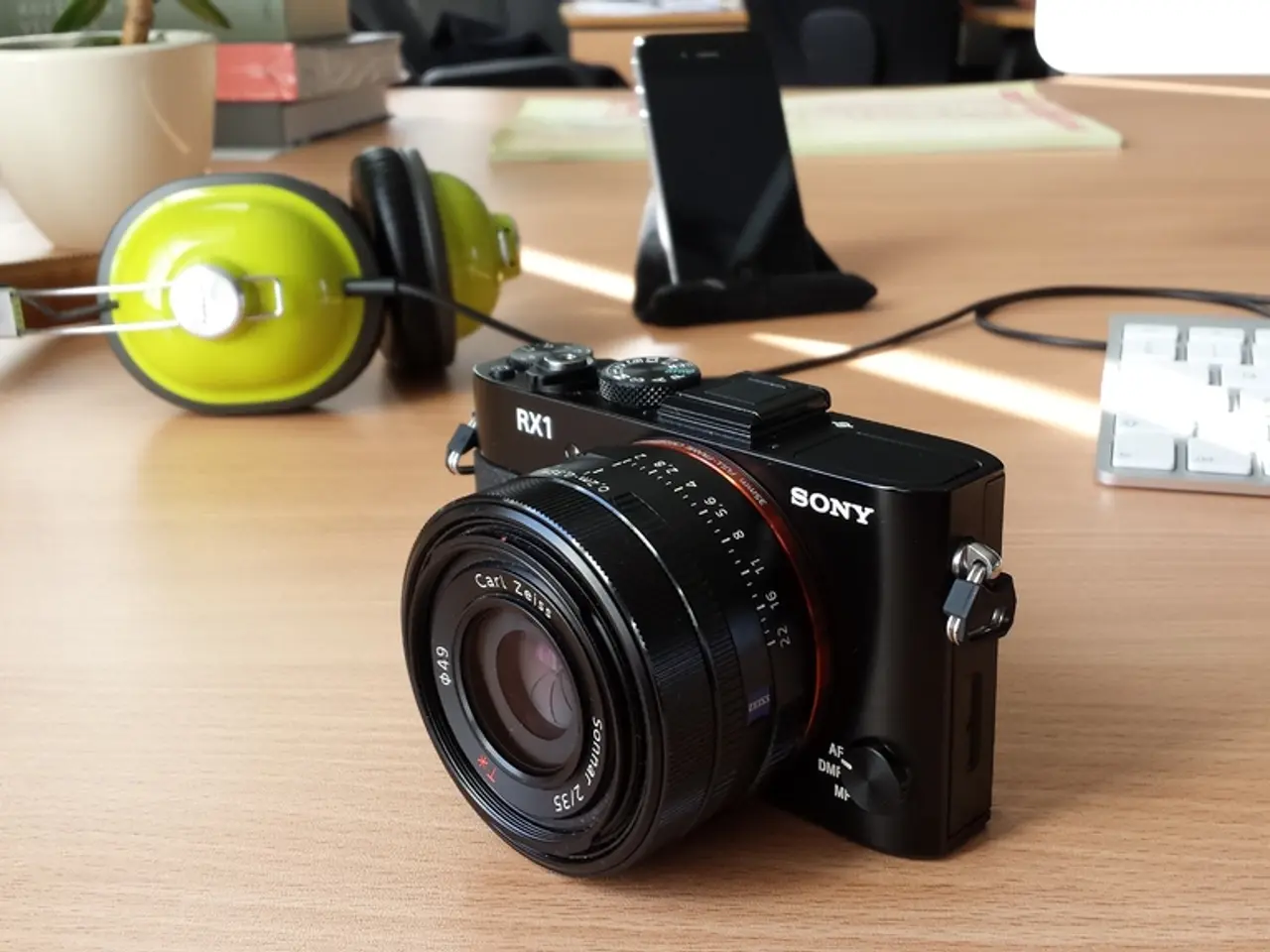DJI's new Osmo model boasts the largest sensors in the market, but it's not just that feature that sets it apart as a pioneer in the industry...
DJI Osmo 360 and Insta360 X5: A Comparison of High-End 360-Degree Cameras
The DJI Osmo 360 and the Insta360 X5 are two high-end 360-degree cameras that offer 8K video capabilities but have distinct differences in features and specifications.
Both cameras excel in video resolution, with the DJI Osmo 360 boasting a higher frame rate of up to 50 fps in 8K mode and a 10-bit color depth, providing filmmakers with extensive post-processing flexibility. The Insta360 X5, on the other hand, offers superior slow-motion capabilities, with 4K video up to 120 fps, and a unique feature set that includes "Instaframe" and dash cam mode.
In terms of photo resolution, the DJI Osmo 360 takes the lead with up to 120 MP still photos, while the Insta360 X5 offers up to 72 MP. Both cameras support HDR and offer flat color profiles, with DJI's D-Log being a popular choice among professional videographers for its tonal detail.
Battery-wise, the Insta360 X5 has a larger capacity, but DJI claims efficient continuous recording for the Osmo 360, enabling it to record 8K video at 30fps for over 100 minutes.
The DJI Osmo 360 comes with 105GB of built-in storage and features DJI's HorizonSteady and RockSteady image stabilization and horizontal levelling technology. It weighs 183g (6.5 ounces) and has a panoramic imaging field diameter of 9.6mm, larger than the Insta360 X5's 7.2mm.
The Osmo 360 is now officially released and available to order immediately. It comes in two combos: the 'Standard Combo' for £409.99 / AU$759 and the 'Adventure Combo' for £539.99 / AU$989. The 'Adventure Combo' includes two additional batteries, DJI's 'Multifunction Battery Case 2' which can charge up to 3 batteries at once, a tiltable Quick Release Adapter Mount, and the Osmo 1.2m Invisible Selfie Stick.
For those interested in editing their footage, DJI Studio offers a computer-based editing experience for Mac and Windows users, and Mimo, the app that comes with other Osmo action cameras, has been built to support 360-degree remote control and editing features. The Osmo 360 is also compatible with the DJI Mic 2 and Mic Mini without the need to connect the receiver, and the Mic can be used as a remote.
Adam Juniper, a tech journalist with over 20 years of experience, specializing in camera drones and drone photography, has written several books on the subject, including "The Complete Guide to Drones," "The Smart Smart Home Handbook," "101 Tips for DSLR Video," and "The Drone Pilot's Handbook." His insights provide valuable perspective on these two cutting-edge 360-degree cameras.
However, it's important to note that the global launch of the Osmo 360 does not include the USA; it will not be available for sale immediately through official DJI channels.
In conclusion, the DJI Osmo 360 leads in video frame rate, color grading ability, and photo resolution, while the Insta360 X5 provides superior slow-motion options and some unique feature modes. The best choice depends on your priorities: higher frame rates and color depth (DJI Osmo 360) vs. slow-motion and extra creative features (Insta360 X5).
- The DJI Osmo 360 and Insta360 X5 are high-end 360-degree cameras with 8K video capabilities, each offering unique features and specifications.
- The DJI Osmo 360 has a higher frame rate of up to 50 fps in 8K mode, 10-bit color depth, and supports extensive post-processing flexibility.
- The Insta360 X5, meanwhile, offers superior slow-motion capabilities at 4K video up to 120 fps and features such as "Instaframe" and dash cam mode.
- In terms of photo resolution, the DJI Osmo 360 produces up to 120 MP still photos, whereas the Insta360 X5 delivers up to 72 MP.
- For editing 360-degree footage, DJI Studio offers a computer-based editing experience, and Mimo, the app associated with other Osmo action cameras, supports 360-degree remote control and editing features.
- In the realm of technology, these cutting-edge 360-degree cameras can be considered as gadgets alongside camera drones, DSLRs, smartphones, and other photography equipment.
- Tech journalist Adam Juniper, with over 20 years of experience in camera drones and drone photography, has written several books on the subject and provides valuable insights into these two remarkable 360-degree cameras.


![2025 VTOL Drones Explored in Detail: A Comprehensive Overview [New Release]](/en/content/images/size/w1280/format/webp/20250802021031_vtol-drones-uavs.jpeg)

